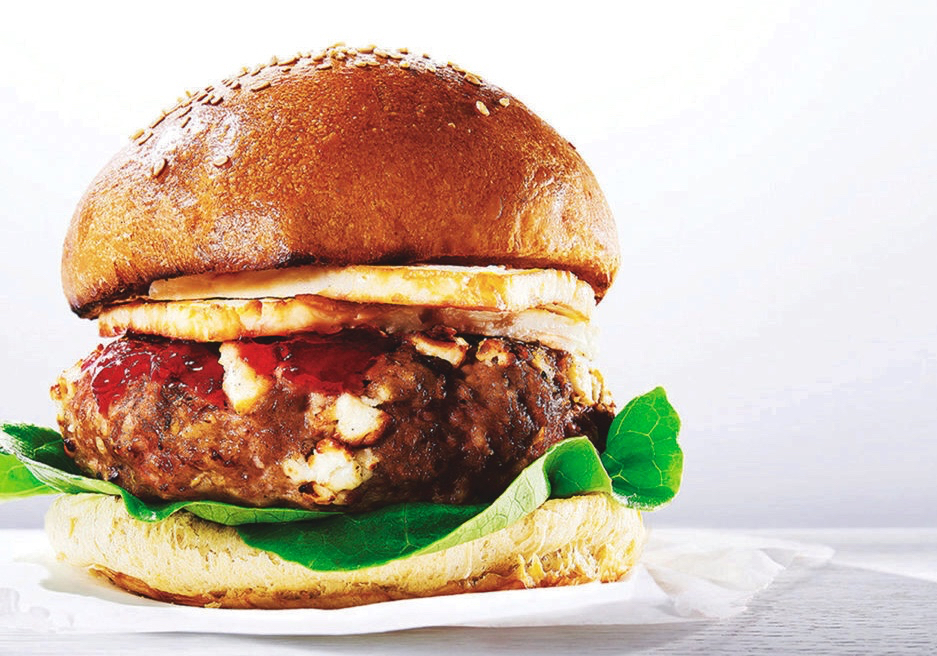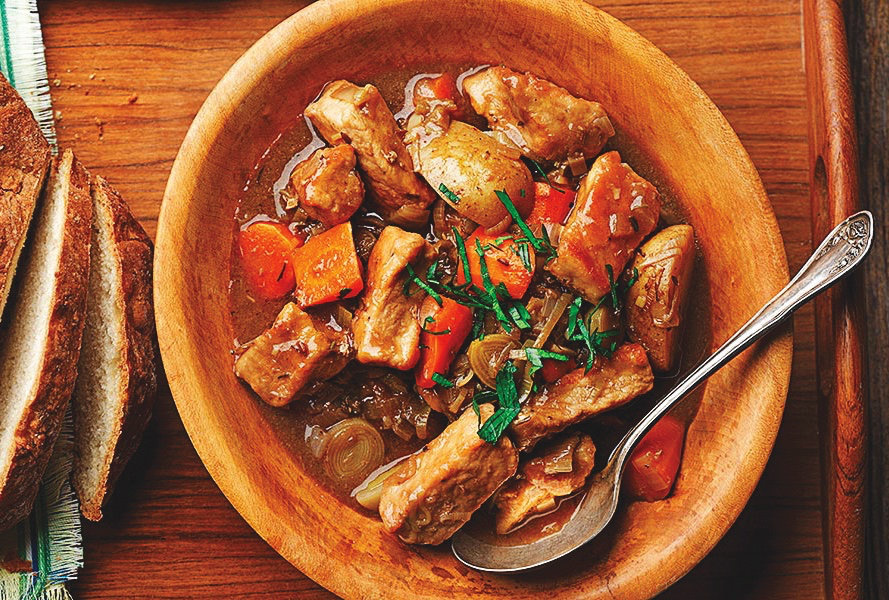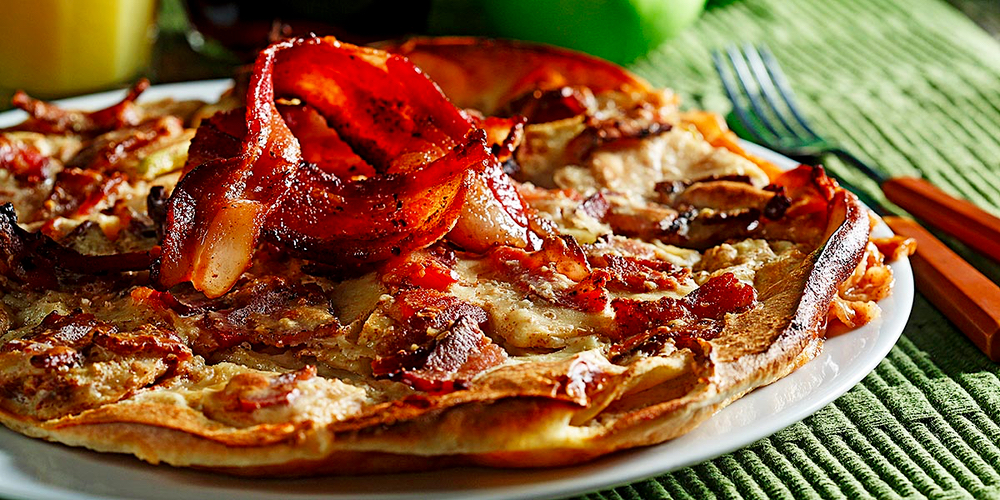I recall the first time I brought home an eggplant from the grocery store. I probably would have gotten similar attention if I brought a martian home for dinner.
I pulled it out of the shopping bag and set it on the counter. My husband and our kids gathered around and examined it. As I recall, my husband said, “Anything as weird as eggplant has to be nutritious.”
I gave my husband “the look.” He stopped talking.
“It doesn’t look like an egg,” our son remarked. He was seven years old at the time.
Read Also

Your best (and easiest) holiday dainty tray
Make-ahead recipes, store-bought goodies and co-operation with friends and family: Here’s how to throw together a stunning, low-stress tray.
“I think it’s pretty and shiny,” our then four-year-old daughter added.
“It’s supposed to be purple, not almost black,” our son reminded her. When I finally was able to extricate my family from staring at the intact eggplant, I prepared it in a way I thought they might enjoy or at least taste. I dipped eggplant slices in beaten eggs, rolled them in crushed crackers and herbs and fried them in some canola oil. I loaded my husband’s plate with a hefty pile of eggplant. He ate it all with no further comments. I think he talked about how delicious it tasted.
Our daughter ate a small piece. Our son wrinkled his nose. He looked at me and said, “This is too weird.” I think I coaxed him to have a tiny nibble.
Echoing in my brain was the advice of nutrition researchers who say a new food may take 10 or more exposures before a child will try it. I decided to be patient.
Now, 12 years later, our two teenagers are adventurous eaters who will try almost any food. They love to try new things in restaurants and appreciate unique combinations of foods at home.
Eggplants have been eaten for centuries. Spaniards called it “Berenganias” or the apple of love. They thought eggplant contained a love potion. In the U.S., eggplant was first used as an ornamental plant.
Eggplant is very low in calories unless you bread it and fry it. A half-cup serving of plain eggplant contains about 20 calories and is a source of dietary fibre and some vitamin C.
Eggplants are very perishable, so they should be used quickly after purchase or harvest. Look for eggplants with a smooth, even-coloured, dark-purple skin. Avoid eggplants with any sunken dark areas. Store them in the vegetable compartment of your refrigerator because the higher humidity helps keep them fresh.
Eggplant can be sautéed, baked, broiled, grilled or stuffed. Extra eggplant can be frozen. To freeze, slice or cube the eggplant and dip in a solution of 1 tablespoon lemon juice to 1 quart of water. Blanch in boiling water for four minutes. Cool promptly in cold water. After cooling, dip again in the lemon juice solution. Drain well and package in airtight containers, leaving 1/2-inch head space.
Julie Garden-Robinson is a North Dakota State University Extension Service food and nutrition specialist and professor in the department of health, nutrition and exercise sciences.
Here’s a tasty recipe that makes good use of a variety of late-summer garden goodies, including eggplant, zucchini, green peppers and onions. In fact, a few years ago when we watched a movie with the same name as this recipe, my kids remembered the first time they tried eggplant at home.
Ratatouille
- 1/4 c. olive oil
- cloves garlic, minced
- 1 onion, sliced
- 1 green pepper, seeded and cut in strips
- 3 medium unpared zucchini, cut in 1/4-inch slices
- 1 medium eggplant, pared and cut into cubes
- 2 tsp. dried basil
- 1 tsp. dried oregano
- 1-1/2 tsp. salt
- 1/8 tsp. black pepper
- 3 tomatoes, peeled and cut in wedges
Heat oil in large skillet; add garlic, onion, green pepper and zucchini. Cook about three minutes or until onion is tender, stirring frequently. Add eggplant, herbs and seasonings and then cover and cook over medium heat for 15 minutes, stirring occasionally. Add tomato wedges; cover and cook for five minutes longer or until tomatoes are heated. Serve hot or cold.
(Note: To remove skins from tomatoes, plunge tomatoes one at a time in boiling water for about 30 seconds. Skins then will slip off easily.)
Wilted Rainbow Chard with Seared Eggplant and Parsley Vinaigrette
Here’s another recipe for using eggplant from CanolaInfo.org. In this salad, the wilted, yet vibrant chard leaves are nestled under baby eggplant caramelized with canola oil. The vegetables are then drizzled with a zesty green vinaigrette made with parsley. The meatiness of the eggplant makes this an excellent vegetarian meal, but you may also add grilled tofu or roasted or grilled chicken breast for protein. For variety, substitute beet greens, collard greens or spinach for the rainbow chard.
Parsley Vinaigrette
- 1 c. tightly packed fresh parsley leaves
- 1/3 c. reduced-sodium chicken broth
- 1/4 c. chopped shallots
- 1 tbsp. cider vinegar
- 2 tsp. canola oil
- 1/4 tsp. freshly ground black pepper
Salad
- 2 tsp. canola oil
- 2 baby eggplant or 1 medium eggplant, unpeeled and cut into 1-inch pieces (4 c.)
- 1 bunch fresh rainbow chard, rinsed well and chopped (4 c.)
In blender, combine all dressing ingredients. Purée until smooth. Set aside. In large skillet, heat 2 tsp. canola oil over medium-high heat. Add eggplant and cook 3-5 minutes, until golden brown on all sides, stirring frequently. Remove from pan and cover with foil to keep warm. Set aside. Add rainbow chard to same skillet over medium-high heat. Cook 1-2 minutes or until chard wilts, stirring frequently. Remove from heat and arrange chard on serving platter. Arrange eggplant over top of chard. Drizzle parsley vinaigrette over eggplant and chard and serve.
Yield: 4 servings. Serving size: 3/4 cup eggplant mixture, 1/2 cup wilted chard.
Source: Recipes printed with permission from www.canolainfo.org















